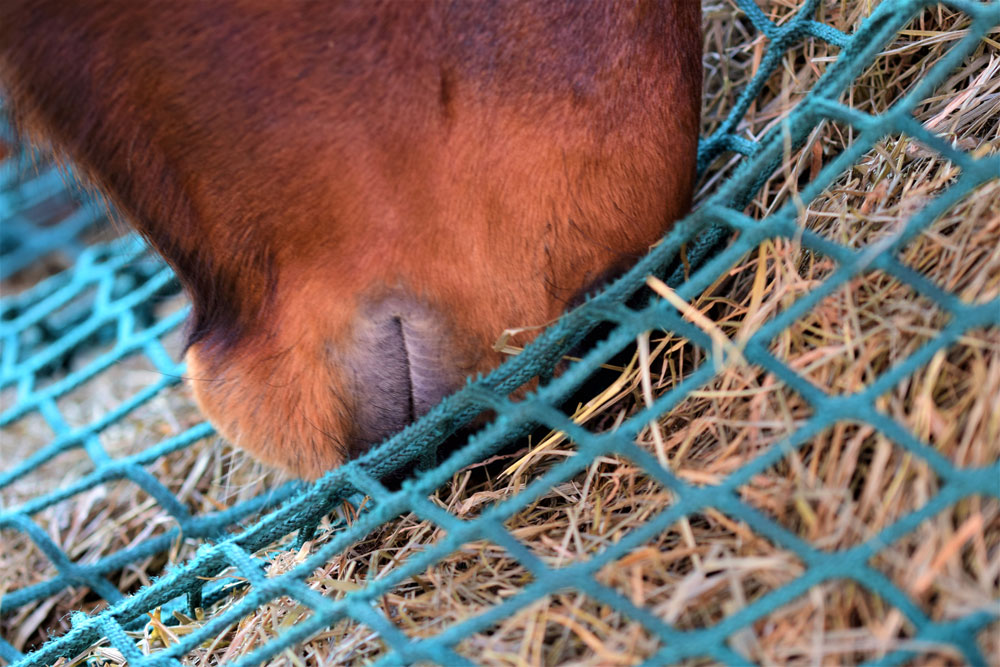
Q: My metabolic horse currently eats a grass/legume mix hay, but some barns nearby have started purchasing teff hay. It is a bit more expensive, but I would be happy to make the switch if it is better for my metabolic horse. Why might it be better for him?
A: Choosing a hay to complement your horse’s nutritional needs can help ease your workload and reduce feed costs. Managing easy keepers and horses with metabolic issues can be challenging, but ensuring they maintain a healthy body condition through diet and exercise is crucial to their overall well-being.
When deciding which type of hay to purchase, start by considering typical trends in nutritional content across the popular hay species. Focus on the three main categories: legumes, warm-season grasses and cool-season grasses. Legumes can include alfalfa, red clover, and birdsfoot trefoil, and are generally higher in protein and digestible energy (DE) content but lower in nonstructural carbohydrates (NSCs).
Cool-season grasses include timothy, orchard grass, tall fescue, bromegrass, and Kentucky bluegrass, while warm-season grasses include teff, Bermuda, and switchgrass. Both tend to be lower in protein and DE than legumes, but cool-season grasses are known for being higher in NSCs. Therefore, warm-season grasses typically suit easy keepers best, yet many climates make growing them difficult or impossible.
Teff Hay for Metabolic Horses
Teff grass needs to be replanted yearly, which can increase the cost. Even though it tends to thrive in warmer climates, it also adapts well to cooler environments. This has caused a recent boost in its popularity in certain regions.
Many variables influence hay’s nutritional content beyond just plant species, so having your hay tested before feeding it to your metabolic horse is the gold standard. Then, based on the results and values such as calorie and sugar content, you can choose the hay that best suits your horse’s needs.
Most horse owners managing metabolic horses are hyper-focused on the NSC content of the hay, which is vital for preventing laminitis. However, it’s also crucial to consider the forage’s energy content for easy keepers with metabolic issues. For example, if your horse’s hay has a DE content of 2.2 Mcal/kg (1 Mcal/lb) and he is overweight, it will be very challenging to support weight loss without severe forage restriction, which often results in other health and management issues. On the other hand, if the hay is 1.7 Mcal/kg (0.77 Mcal/lb), it is a much better match for his energy requirements and will make it easier to promote weight loss.
Take-Home Message
Teff hay has gained popularity among owners feeding easy keepers and metabolic horses due to its lower energy and sugar content compared to cool-season grasses or legumes. However, numerous factors influence the nutritional content of hay beyond plant species, so be sure to test hay prior to choosing one for your metabolic horse.



